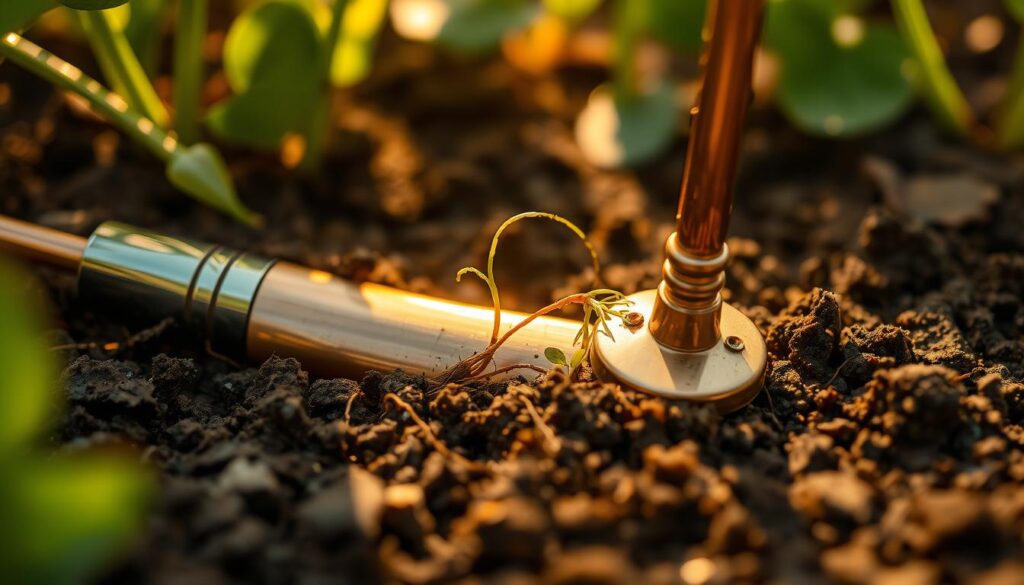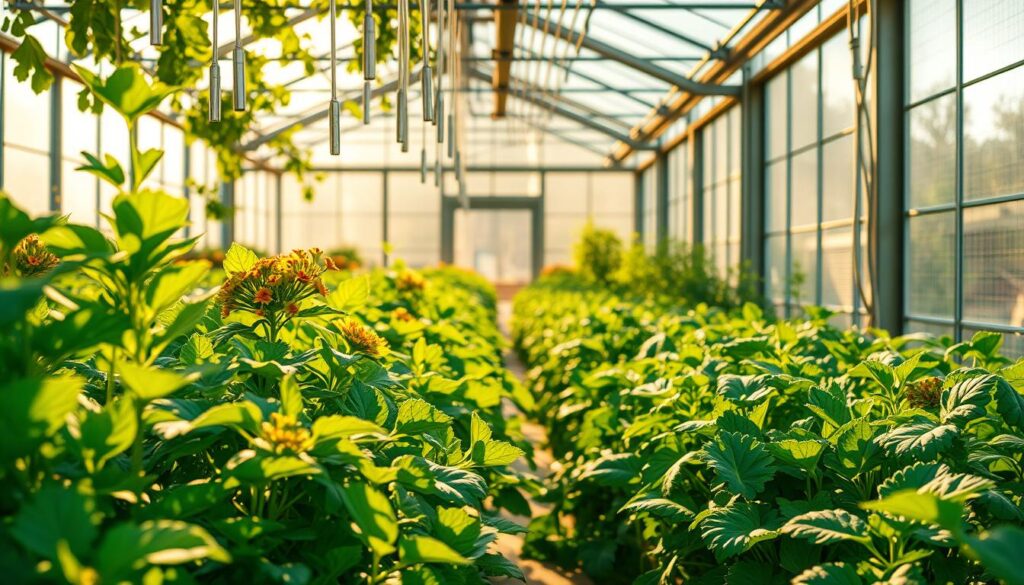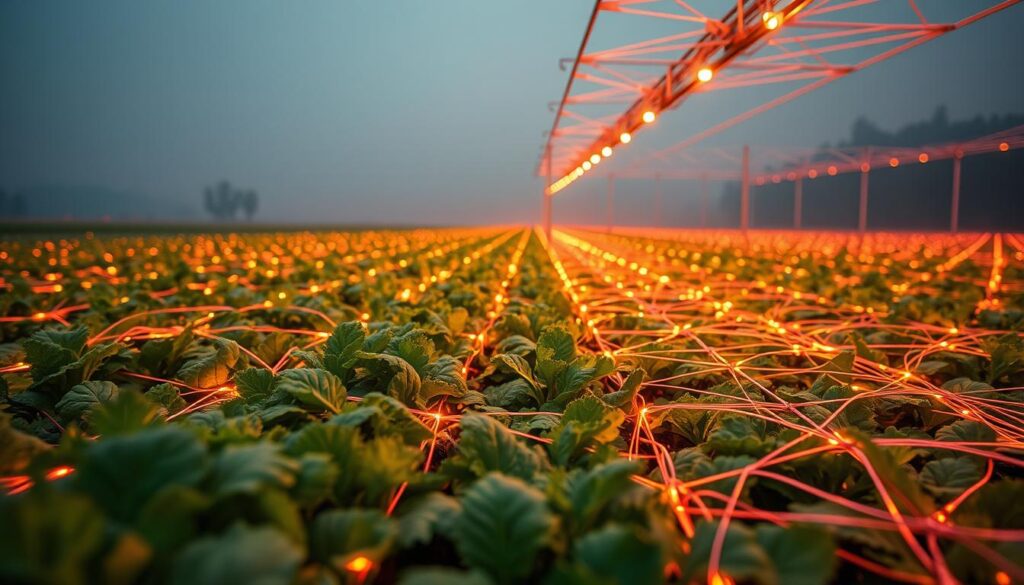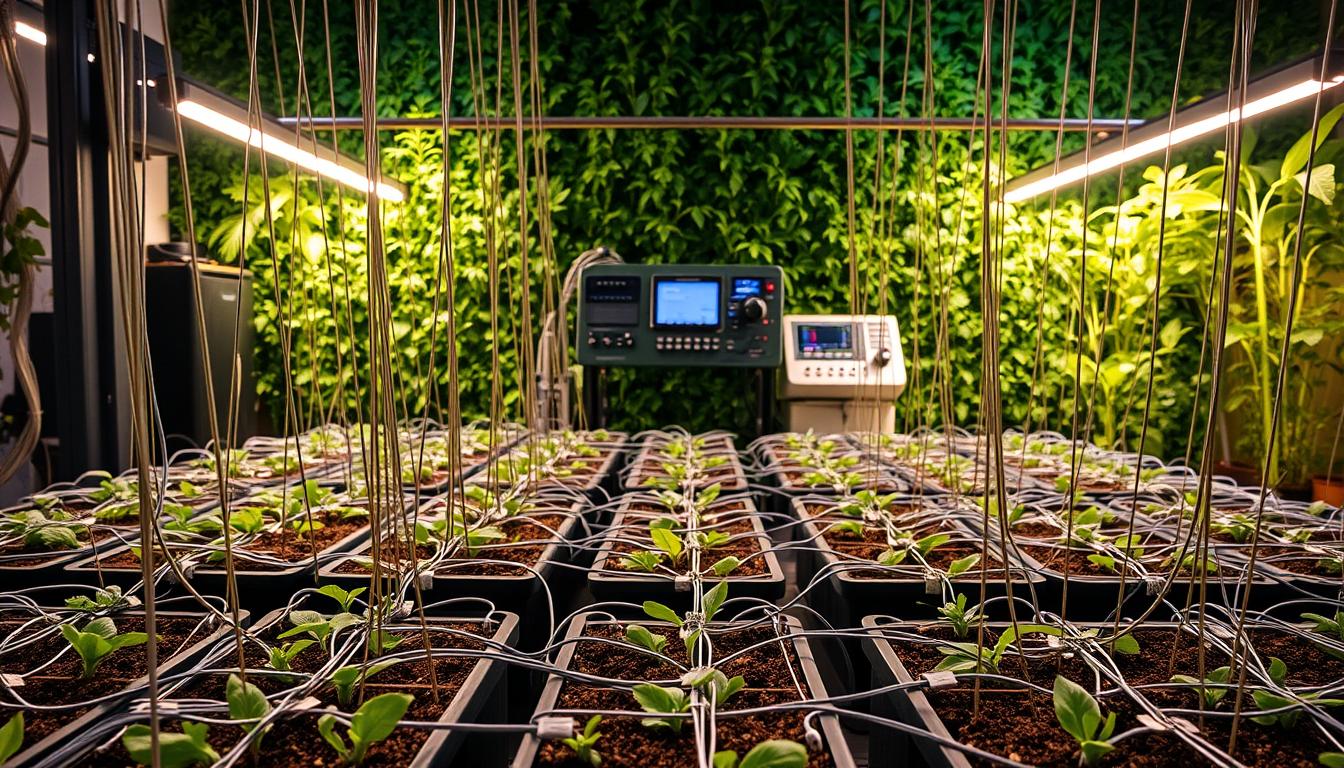Have you heard about electroculture? This trending gardening method claims to boost plant growth using atmospheric energy. Though it sounds futuristic, the idea dates back to the 1930s when scientist Justin Jaccard studied how electrical currents affect plants.
Today, this technique has gone viral on social media, with gardeners sharing their experiments using copper coils or antennas to capture energy. Some swear it increases yields, while scientists remain skeptical. So, does it really work?
Historically, farmers noticed crops thrived after lightning storms—likely due to nitrogen fixation in soil. Modern electroculture taps into similar principles, but is there solid science behind it? Let’s explore its roots, DIY trends, and whether it delivers results.
Key Takeaways
- Electroculture uses atmospheric energy to stimulate plant growth.
- It gained popularity through social media despite mixed scientific backing.
- The concept dates back to the 1930s with Justin Jaccard’s research.
- Lightning storms historically improved soil nitrogen levels naturally.
- Modern DIY methods include copper coils or antennas in gardens.
What Is Electroculture Gardening?
Some gardeners swear by an ancient energy-harvesting trick for lush crops. This method uses conductive materials like copper wires or antennas to capture atmospheric energy, which believers say supercharges plant growth. While it sounds futuristic, the idea traces back to early 20th-century experiments.

The Basic Concept
At its core, this technique relies on natural electrical fields. Plants exposed to these fields may absorb nutrients more efficiently. Think of it like a vitamin boost—but from the air, not fertilizer.
Early pioneers like Justin Christofleau built electromagnetic devices to amplify crop yields. Viktor Schauberger later explored how water and soil interact with natural energy flows. Their work laid the groundwork for today’s DIY methods.
How It’s Practiced Today
Modern homesteaders use simple tools:
- Copper coils buried in soil to create micro-currents.
- Vertical antenna structures (wood or metal) to attract energy.
- Spiral designs to mimic natural electromagnetic patterns.
| Method | Materials Needed | Claimed Benefits |
|---|---|---|
| Copper Wire Spirals | Copper wire, garden stakes | Frost resistance, faster growth |
| Wooden Antennas | Wooden poles, copper nails | Pest reduction, less watering |
While science debates its efficacy, enthusiasts report healthier plants and bigger harvests. Whether it’s harnessing “Chi” or simply improving soil conductivity, this old-school hack is gaining new fans.
The History of Electroculture
Long before modern gadgets, curious minds tested nature’s hidden forces on plants. From electrified water to buried batteries, early experiments laid the groundwork for today’s methods.
Early Experiments (18th–19th Century)
In 1749, French scientist Abbe Nollett zapped water with electricity, observing faster plant growth. Decades later, Berthelon’s “electro-vegetatometer” became a quirky lab tool.
The 1840s saw Robert Forster’s breakthrough. His “earth batteries”—metal rods in soil—boosted barley yields by 30%. Farmers took note, but skeptics dismissed it as luck.

The 20th-Century Revival
Finnish physicist Selim Lemström linked the Northern Lights to rapid plant growth in 1904. His book sparked global interest, but World War I stalled research.
Enter Justin Christofleau. In the 1920s, his electromagnetic devices doubled crop sizes. Farms from France to Argentina adopted them—until WWII silenced the trend.
Key Figures and Hidden Trials
- British Electro-Culture Committee (1918–1936): Ran secret field tests, but records vanished.
- Christofleau’s electric garden: A Parisian marvel with charged soil beds.
Though forgotten for years, these pioneers proved one thing: plants respond to energy in ways we’re still unraveling. For more on modern twists, explore NewGen Living’s sustainable gardening guides.
Does Electroculture Really Work? The Science Behind It
Behind the viral gardening trend lies a century of contested research. While enthusiasts swear by lush harvests, scientists remain divided over whether electrical fields truly boost plants.
Early Scientific Studies and Their Findings
In the 1930s, experiments delivered mixed results. Some plots thrived with 10-milliamp currents, while others stunted. A 1926 USDA bulletin dismissed the method as unreliable, citing inconsistent conditions.
One study noted taller barley but smaller wheat yields—proof that effects vary by crop. “The data was too erratic to draw conclusions,” admitted agronomist Dr. Eliott in a 1938 journal.
Modern Research and Skepticism
Post-1968, peer-reviewed studies vanished. The 2021 IEEE conference featured claims of 20% larger tomatoes, but critics called it pseudoscience. Physicists argue there’s no proven mechanism for energy conversion.
“Without reproducible trials, it’s just folklore,” says Dr. Lena Kowalski, a botanist at MIT.
The Thunderstorm Theory
In 2006, biologist Andrew Goldsworthy proposed a compelling idea:
“Plants interpret electrical charges as pre-storm signals, triggering a metabolic burst to absorb nutrients and water faster.”

This aligns with historical observations of post-lightning growth spurts. Yet, replicating these conditions artificially remains unproven.
Potential Benefits of Electroculture
Could subtle electrical currents be the secret to thriving gardens? Advocates argue this method unlocks hidden advantages, from plumper tomatoes to fewer pests. While research remains divided, anecdotal successes paint an intriguing picture.
Increased Plant Growth and Yields
Early experiments showed startling results. Christofleau’s electrified cabbages reportedly doubled in size, while modern Chinese greenhouses boast 20–30% higher yields. Lemström’s 1904 study even noted sweeter fruits and stronger scents in treated crops.

Reduced Need for Fertilizers and Pesticides
Some claim this technique slashes chemical dependency. Christofleau rejected synthetic fertilizers, relying instead on atmospheric nitrogen absorbed by soil. Others report fewer pests, possibly due to enhanced plant immunity from energy exposure.
Environmental Advantages
Beyond bigger harvests, the method may lighten agriculture’s footprint. Less synthetic fertilizer use means lower CO2 emissions from production. Healthy soil also retains more carbon, making it a win for eco-conscious growers.
“Natural energy could replace half our agrochemicals if harnessed correctly.”
While homesteaders celebrate these perks, scientists urge caution. Without large-scale trials, the true potential—and limits—of this approach remain unproven.
Modern Applications and DIY Electroculture
From sprawling farms to backyard plots, a quiet revolution is reshaping how we grow plants. Innovators blend ancient wisdom with modern twists, proving this method’s versatility across scales.
China’s Large-Scale Experiments
China leads the charge with 8,895-acre electrified greenhouses. Overhead copper wire systems stimulate rice and wheat, reportedly boosting yields by 15%. State-backed farms treat entire fields like living circuits.

Simple Techniques for Home Gardeners
DIY enthusiasts craft tools from everyday materials:
- Copper coils: Wrap wire around wooden stakes, bury 6 inches deep.
- Spiral antennas: Vertical designs attract atmospheric energy.
- Zinc rods: Grounding prevents overvoltage damage to roots.
Permaculture communities pair these with biodynamics for synergy. Facebook groups buzz with antenna blueprints—like the “Tesla Tower” for tomatoes.
“Start low—10 milliamps max. Plants respond to whispers, not shouts.”
For deeper dives into sustainable methods, explore NewGen Living’s gardening guides. Whether scaling up or starting small, the world of plant-energy interplay keeps growing.
Conclusion: Is Electroculture Worth Trying?
Gardeners worldwide debate whether this energy-based method truly enhances plant vitality. While enthusiasts report lush yields, science demands peer-reviewed research to confirm if it works.
For curious growers, testing a single raised bed with low-voltage copper coils is a safe start. Avoid high currents—they may harm soil microbes and nutrients.
History hints at potential, but commercial farms should rely on proven methods. Could future studies turn this “pseudoscience” into a breakthrough? Only time—and rigorous testing—will tell.

